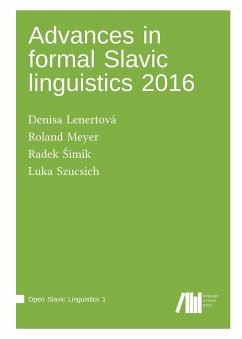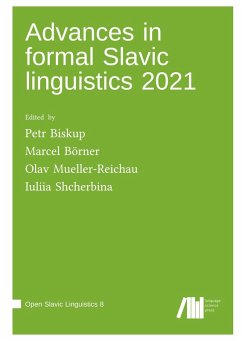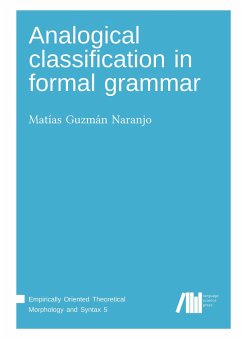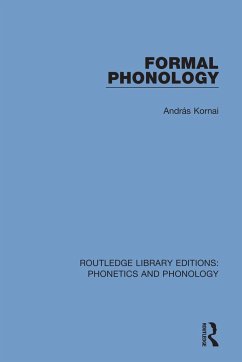
Advances in formal Slavic linguistics 2016
Versandkostenfrei!
Versandfertig in 1-2 Wochen
30,99 €
inkl. MwSt.

PAYBACK Punkte
15 °P sammeln!
Advances in Formal Slavic Linguistics 2016 initiates a new series of collective volumes on formal Slavic linguistics. It presents a selection of high quality papers authored by young and senior linguists from around the world and contains both empirically oriented work, underpinned by up-to-date experimental methods, as well as more theoretically grounded contributions. The volume covers all major linguistic areas, including morphosyntax, semantics, pragmatics, phonology, and their mutual interfaces. The particular topics discussed include argument structure, word order, case, agreement, tens...
Advances in Formal Slavic Linguistics 2016 initiates a new series of collective volumes on formal Slavic linguistics. It presents a selection of high quality papers authored by young and senior linguists from around the world and contains both empirically oriented work, underpinned by up-to-date experimental methods, as well as more theoretically grounded contributions. The volume covers all major linguistic areas, including morphosyntax, semantics, pragmatics, phonology, and their mutual interfaces. The particular topics discussed include argument structure, word order, case, agreement, tense, aspect, clausal left periphery, or segmental phonology. The topical breadth and analytical depth of the contributions reflect the vitality of the field of formal Slavic linguistics and prove its relevance to the global linguistic endeavour. Early versions of the papers included in this volume were presented at the conference on Formal Description of Slavic Languages 12 or at the satellite Workshop on Formal and Experimental Semantics and Pragmatics, which were held on December 7-10, 2016 in Berlin.












